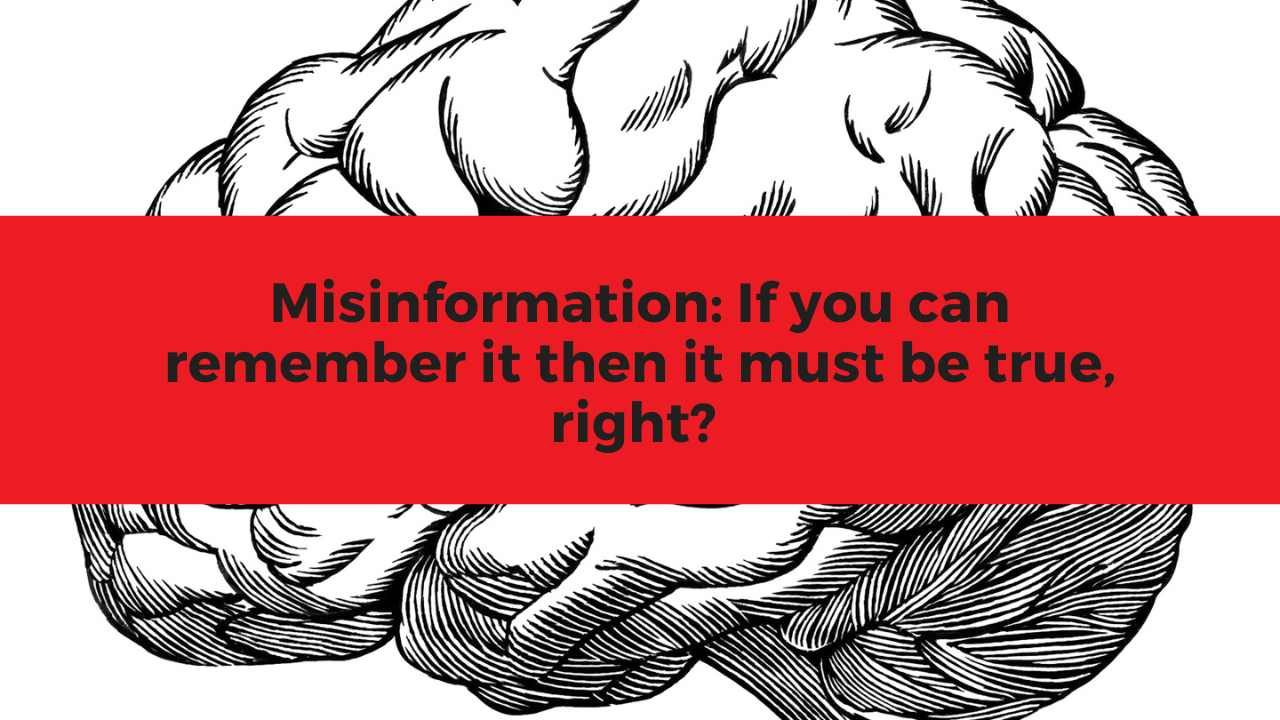Misinformation: If you can remember it then it must be true, right?
John is scrolling on his social media feed when he sees an article with the headline, “Vaping Could Cause Lung Disease”. Scared for his friends who vape, he immediately shares it on his social media. This situation occurs daily in the modern world of instant news distribution, where headlines can make or break an article’s impact.
The previous article that John didn’t remember after his social media visit, called “Vaping Cardiovascular Health Risks: An Updated Umbrella Review”, talked about how vaping was notably safer than traditional combustible cigarettes.
This is an example of a psychological mechanism called the availability heuristic. Our brains give undue weight to information that’s easy to recall, creating distorted perceptions about vaping risks.
What is the Availability Heuristic?
The availability heuristic is a mental shortcut in which we judge the likelihood based on how easily examples come to mind. A heuristic is a technique of problem solving using practical thought processes to come to a ‘good enough’ solution. Psychologists Amos Tversky and Daniel Kohneman first studied the availability heuristic phenomenon in 1973, after years of research into how humans use heuristics and biases in judgement under uncertainty.
Where do we see it?
Availability heuristic examples can be found everywhere in daily life. A recent tragic airplane crash will lead to a decrease in airline business, even though hundreds of thousands of flights have successfully flown since the last airplane disaster. When a news story about a shark attack breaks, people will stop going to the beach for a short time. While in prehistoric times this way of problem solving could have been a useful survival tactic, in modern times it can cause issues with how we perceive the world around us.
The Vaping Information Landscape
How the Availability Heuristic Distorts Vaping Perceptions
Information around vaping can come in shocking ways, such as the recent article “Fears vaping could cause CANCER…”. These headlines are what most readers see and remember, not nuanced, peer-reviewed scientific research articles that talk about the relative harm of vaping versus smoking like this one: An updated overview of e-cigarette impact on human health. Media headlines prioritise shock to increase shares, views, and clicks, while scientific studies focus on facts.
The shock factor
The mechanism behind the availability heuristic is the ability to exploit how memory is linked to vivid, emotional responses to events. The stronger something makes you feel, the more likely you are to remember it which is why shock tactics work!
The Compounding Effect of Social Media
Media headlines focusing on interactions and click rates, when combined with modern social media algorithms, can cause positive feedback loops that are detrimental to public perception on a topic. A positive feedback loop is when the output of something increases the input causing a runaway growth effect, which can cause drastic negative effects. Modern social media platforms have created algorithms that will suggest content that your virtual friends have interacted with or that it believes you may enjoy. This feeding of information can cause more similarly fear-inducing articles to be presented to you, which you may click on, which makes the algorithm suggest more to you, and so on.
What are Echo Chambers
Similarly, when shocking articles are published, others will repost the same information and an ‘echo chamber’ begins where the information becomes difficult to avoid. These reasons also make it difficult to see corrected materials, since there is so much of the original information that it becomes impossible for the new information to be seen or believed.
Breaking the Availability Trap: Personal Strategies
How can we combat the availability heuristic and feedback loops in social media networks? The first step is awareness. More people being aware of these issues will help to counteract their effects. Another tool to combat heuristics is to encourage people to seek more information and to continue educating themselves with information from multiple sources before coming to their own opinions. When coming across a vaping headline, think about who is sharing the information, what the purpose of the article is, and how this compares to previous information you’ve encountered. Our new app may be a useful resource to help with these issues.
Debunk vaping misinformation with our machine learning app!
The Vaping Misinformation Detector (VMD) directly counters availability heuristic by systematically analysing articles on vaping against a comprehensive database of verified facts. Unlike our brains, which prioritise memorable information, the VMD separates fact from memorable, often exaggerated claims, and provides counter-arguments with links to scientific evidence. The app presents information with proper context, highlighting both what we know and the limitations of current research. By regularly using VMD, users build a more accurate mental repository of vaping information that reflects scientific consensus rather than sensational headlines.
Conclusion
The availability heuristic, or the human phenomenon that allows us to primarily recall the most recent and extreme information about a topic, can inhibit our ability to process accurate information regarding vaping and other topics. You have already taken the first step in combating this availability trap by educating yourself on the topic with this article, but you can also take the next step. Encourage your friends and family to continue educating themselves, ask questions about the things they read, and use resources such as the VMD app to make sure the information you receive is accurate. Gradually bettering your information consumption can lead to a happier and healthier mind.
Guest article “Misinformation: If you can remember it then it must be true, right?” by Gavin Moriarty



Comments are closed here.